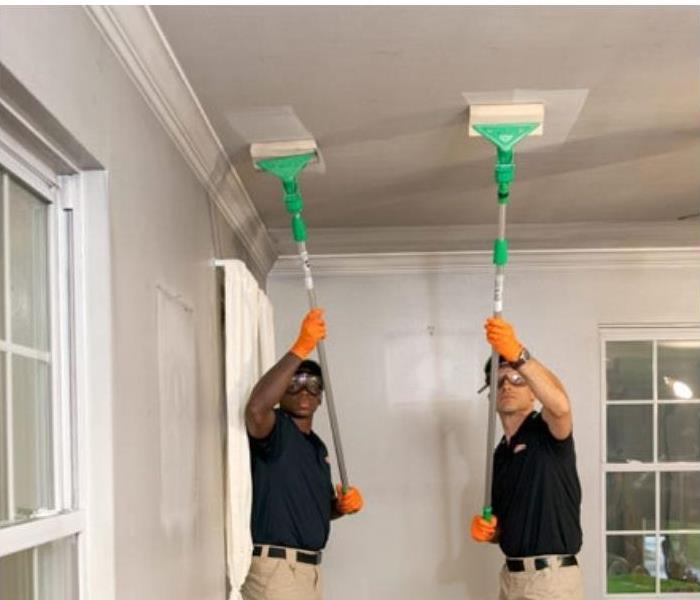Work with Professionals to Help Restore Items After a Fire
9/29/2020 (Permalink)
During a fire, combustion, which is in the process of a solid turning into a gas by applying heat, takes place. Smoke is created by materials that do not burn completely. When fire burns, smoke can travel all over the structure, causing a variety of problems. A large part of mitigating fire damage in Phoenix is dealing with smoke-related issues once the flames have been extinguished. When a blaze takes place, materials all over the home can get coated in soot residue, and foul odors can get left behind.
Restoring items after smoke damage
When restoring a house damaged by smoke, our SERVPRO technicians inspect the structure to figure out which areas got affected. We then determine which cleaning methods to use based on how concentrated the soot is, the type of residue present on items and the kind of materials were affected. If the soot is heavily concentrated, it can be challenging to clean, whereas light residues can be wiped off easily. Having a professional assess damage is critical to fire remediation, and smoke damage clean up.
Types of smoke that cause damage
A fire creates different kinds of smoke throughout its duration based on the materials it burns, the speed of combustion, and the amount of oxygen present. When synthetic materials burn, they create soot that clings to surfaces, whereas residues resulting from natural substances such as wood cause let soot to adhere, though still difficult to clean. Fires that burn slow and lack oxygen produce a wet smoke that can be extremely difficult to remove compared to quick-burning fires that create a dry smoke. Our trained technicians know how to assess the type of smoke caused by the fire and how to address it.
Types of material surfaces
The type of materials surfaces are made of also affects how easily soot residues can be cleaned. Non-porous materials such as plastic and metal deter moisture well, making them easy for SERVPRO technicians to clean using damp, water-based chemicals. Non-porous materials such as softwood and upholstery absorb soot residues better and can penetrate deep into the material. Water-based chemicals can soak the soot deeper into the material, causing them to get ruined. Dry cleaning methods such as wiping with a dry sponge prove to work better in removing soot from porous substances. This is why various methods are available to use when dealing with multiple types of soot residues that affected different kinds of materials. There are different types of cleaning chemicals, as well as application methods that are designed specifically for dealing with certain situations.
A fire can be damaging, not only by the flames but the residual smoke and soot left behind. If you suffer a fire in your home or business and need help removing smoke residues and soils, call SERVPRO of Phoenix at (480) 503-2090 24 hours a day. Our trained technicians will help you recover from this disaster as quickly as possible.






 24/7 Emergency Service
24/7 Emergency Service